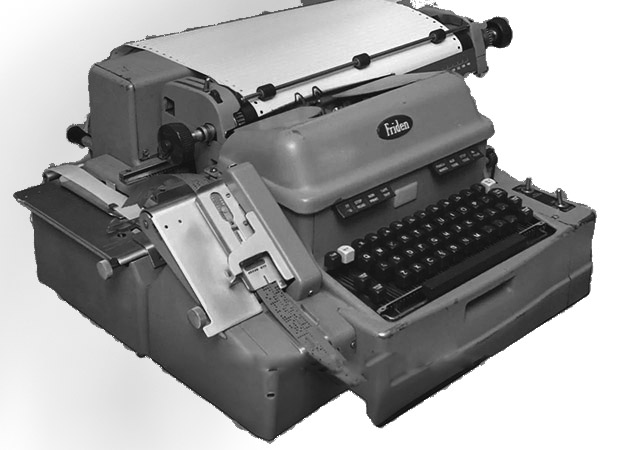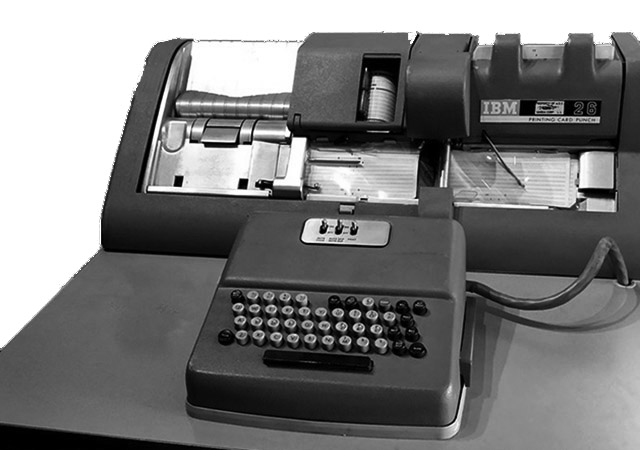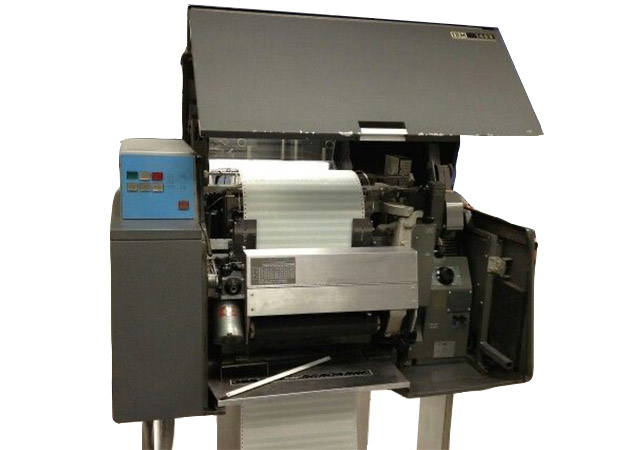
Flexowriter
The Flexowriter and paper tape tended to be found in computing environments that were not data intensive. Paper tape could not be sorted. It couldn't be connected to a line printer. But for purposes where large data sets were not needed, it served well. The punching and printing equipment were relatively inexpensive, if a bit slow. Punched tape disappeared from computer rooms in the 1960s, but continued to be used in some applications, like electronic typesetting, where serial storage of characters was the rule.
Watch Flexowriter
Card Punch
Punched cards date back to the early 1800s, when Jacquard famously used them to automate patterns in looms. As items of data storage and processing, punched cards proved their worth when Herman Hollerith used them to automate the 1890 U.S. census. By the 1950s, punched cards were ubiquitous and most large business and banks depended on them. IBM and others had by this time created a suite of machines that made punched cards practical and efficient: punching equipment, printers, sorters, accounting consoles. Punched cards were a natural companion to computers when they made their debut in the 1950s and 1960s.
Watch Card Punch
Line Printer
Line printers were fast and very noisy. Other printers created output one character at a time, like a typewriter. A hammer with an engraved letter form would strike the paper through an inked ribbon creating an image of the character on the paper. The line printer worked in a similar fashion, but printed an entire line almost instantly. It had not just one hammer, but a row of 132 hammers that stretched along behind the paper horizontally from edge to edge. The letter forms were positioned one after another on a separate belt which contained five sets of 48 character forms and spun on a track just in front of the paper. An inked ribbon lay between the belt and the paper. When the correct letter on the belt was positioned in the correct location on the line to be printed, the hammer behind that location would strike, leaving a printed character on the paper. The belt spun at 17 feet per second. Some line printers could output 1,400 lines per minute.
Watch Line Printer